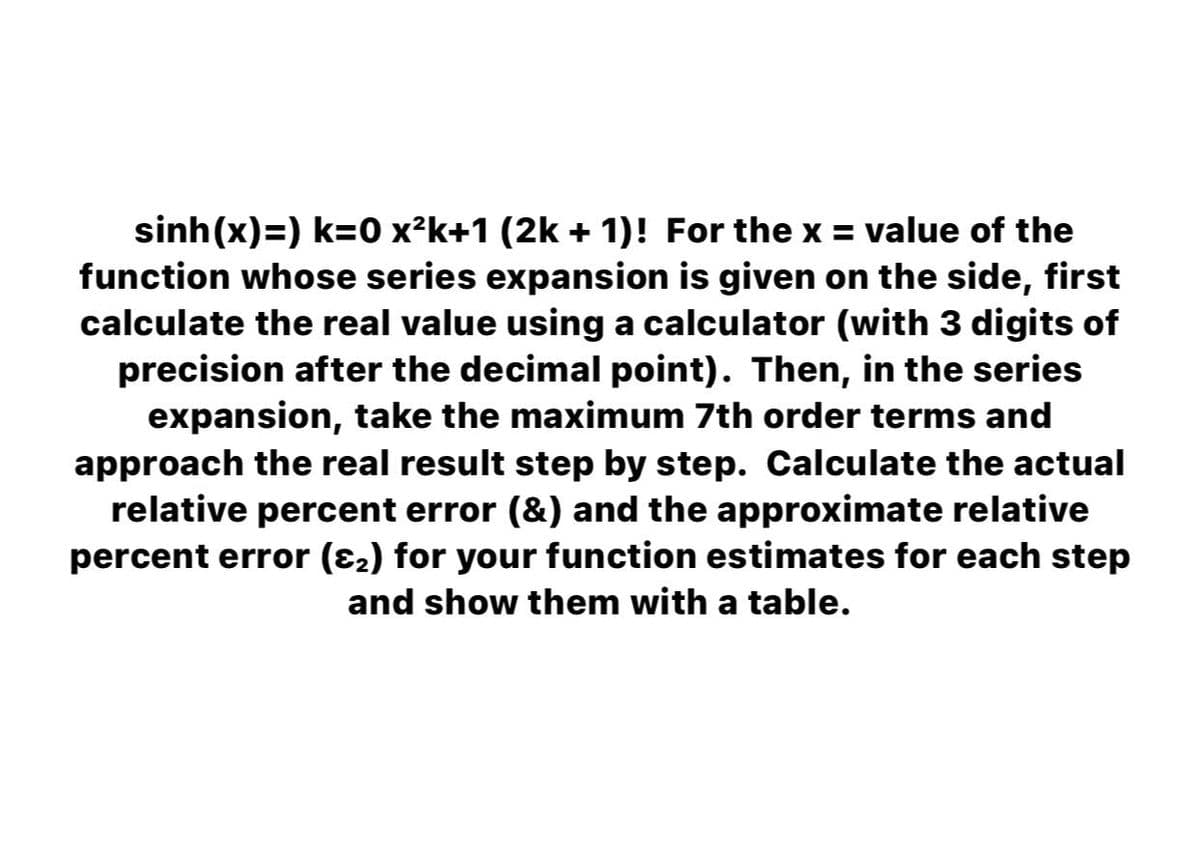<)=) k=0 x²k+1 (2k + 1)! For the x = value of the whose series expansion is given on the side, first e the real value using a calculator (with 3 digits of ion after the decimal point). Then, in the series nsion, take the maximum 7th order terms and n the real result step by step. Calculate the actual e percent error (&) and the approximate relative rror (82) for your function estimates for each step and show them with a table.
<)=) k=0 x²k+1 (2k + 1)! For the x = value of the whose series expansion is given on the side, first e the real value using a calculator (with 3 digits of ion after the decimal point). Then, in the series nsion, take the maximum 7th order terms and n the real result step by step. Calculate the actual e percent error (&) and the approximate relative rror (82) for your function estimates for each step and show them with a table.
Algebra & Trigonometry with Analytic Geometry
13th Edition
ISBN:9781133382119
Author:Swokowski
Publisher:Swokowski
Chapter10: Sequences, Series, And Probability
Section10.2: Arithmetic Sequences
Problem 68E
Related questions
Question

Transcribed Image Text:sinh(x)=) k=0 x²k+1 (2k + 1)! For the x = value of the
function whose series expansion is given on the side, first
calculate the real value using a calculator (with 3 digits of
precision after the decimal point). Then, in the series
expansion, take the maximum 7th order terms and
approach the real result step by step. Calculate the actual
relative percent error (&) and the approximate relative
percent error (82) for your function estimates for each step
and show them with a table.
Expert Solution
This question has been solved!
Explore an expertly crafted, step-by-step solution for a thorough understanding of key concepts.
Step by step
Solved in 2 steps with 2 images

Recommended textbooks for you

Algebra & Trigonometry with Analytic Geometry
Algebra
ISBN:
9781133382119
Author:
Swokowski
Publisher:
Cengage

Algebra & Trigonometry with Analytic Geometry
Algebra
ISBN:
9781133382119
Author:
Swokowski
Publisher:
Cengage